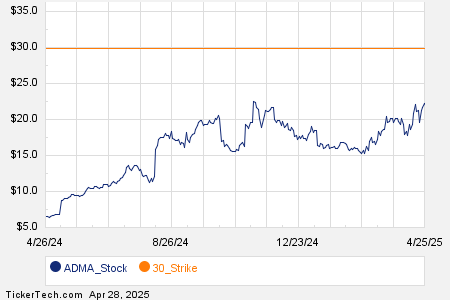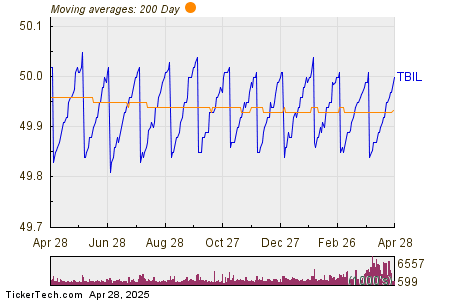“`html
Intel’s Q1 Earnings Show Stability Amid Gloomy Outlook
Intel (NASDAQ: INTC) has released its first-quarter earnings report. The chipmaker achieved $12.7 billion in revenue, a figure unchanged year over year, yet it surpassed analysts’ predictions by $390 million. While adjusted earnings per share (EPS) decreased by 28% to $0.13, this still exceeded the consensus forecast by $0.13. Despite these figures appearing stable, the guidance for upcoming quarters raised concerns.
For the second quarter, Intel anticipates a revenue drop between 3% and 13% year over year, contrasting with analysts’ expectations for flat sales. Additionally, the company projects an adjusted EPS of zero, missing the consensus prediction of $0.07.
Intel’s prospects for a turnaround seem uncertain. Can its new CEO, Lip-Bu Tan, revive the company and compete against Advanced Micro Devices (NASDAQ: AMD) in the x86 CPU space?
Intel’s Market Performance: A Decline
Intel remains the largest producer of x86 CPUs for personal computers and servers. However, from the third quarter of 2016 to the second quarter of 2025, Intel’s x86 market share plummeted from 82.5% to 58.2%, as reported by PassMark Software. In contrast, AMD saw its share rise from 17.5% to 40.3%.
Primarily, this decline stems from Intel’s inability to match Taiwan Semiconductor Manufacturing‘s progress in creating smaller and denser chips. AMD, which shifted its manufacturing to TSMC’s foundries, managed to produce smaller, cheaper, and more efficient chips. Intel faced several challenges, including delays and leadership changes, resulting in significant market share losses.
Furthermore, Intel has struggled to penetrate the mobile chip market, allowing Arm Holdings to dominate, and it failed to capitalize on the growing demand for AI chips, a territory in which Nvidia excels with its GPUs. Additionally, aggressive acquisitions that did not yield beneficial results led to further complications for the company.
This series of setbacks contributed to an annual revenue decline from $55.87 billion in 2014 to $54.23 billion in 2024. Over the past decade, Intel’s stock price has fallen by 34%, while the S&P 500 rose by 160%. During the same period, AMD’s stock surged an impressive 3,950% under the leadership of Lisa Su, who improved engineering processes and capitalized on Intel’s missteps.
Leadership Changes and Future Strategies
With Lip-Bu Tan appointed as Intel’s new CEO in March, speculation arose regarding potential divestitures of foundries or becoming a fabless chipmaker like AMD. However, Tan quickly put those rumors to rest, indicating that Intel would focus on enhancing engineering capabilities, developing AI-integrated CPUs, and expanding its foundry business.
During Intel’s first-quarter conference call, Tan reiterated the company’s plans to streamline operations, divest noncore assets—including the programmable chipmaker Altera—and ramp up production of its 18A process node to support the upcoming Panther Lake CPU for PCs, set to launch in late 2025. Additionally, Intel’s Granite Rapids Xeon 6 CPU is expected to bolster its presence in the server market.
While this roadmap appears feasible, Intel’s pessimistic near-term projections indicate that its latest chips may not significantly impact revenue or profitability. The company also plans to reduce its workforce by approximately 20% to cut costs and has begun outsourcing some production of its upcoming 2nm Nova Lake CPUs, slated for a 2026 launch, to TSMC.
These issues suggest that Intel may continue to find itself caught in a cycle of cost-cutting and dependence on TSMC, while AMD maintains a competitive edge with its Ryzen and Epyc CPU lines. So far, Intel has not articulated a clear strategy to regain its standing against AMD.
Challenges Ahead: Can Intel Compete?
Intel’s setbacks in mobile, discrete GPUs, and its core CPU market point to deeper issues affecting its business model. While AMD has thrived under consistent leadership, Intel has experienced the instability of four CEOs within the past decade.
Although some investors may see potential in CEO Lip-Bu Tan’s vision, I do not yet see clear indicators of improvement. For now, the assumption that Intel can successfully compete with AMD in the x86 CPU market appears overly optimistic.
Investment Considerations for Intel
If you are contemplating buying stock in Intel, consider the following:
The Motley Fool Stock Advisor analyst team has identified what they believe are the 10 best stocks for current investment—and Intel is not among them. The selected stocks are anticipated to yield significant returns in upcoming years.
Consider this: when Netflix made the list on December 17, 2004, an investment of $1,000 would be worth $594,046 today!
Leo Sun has no position in any of the stocks mentioned. The Motley Fool holds positions in and recommends Advanced Micro Devices, Intel, Nvidia, and Taiwan Semiconductor Manufacturing. The Motley Fool recommends Broadcom and suggests shorting May 2025 $30 calls on Intel. The Motley Fool has a disclosure policy.
The views and opinions expressed herein are those of the author and do not necessarily reflect those of Nasdaq, Inc.
“`




